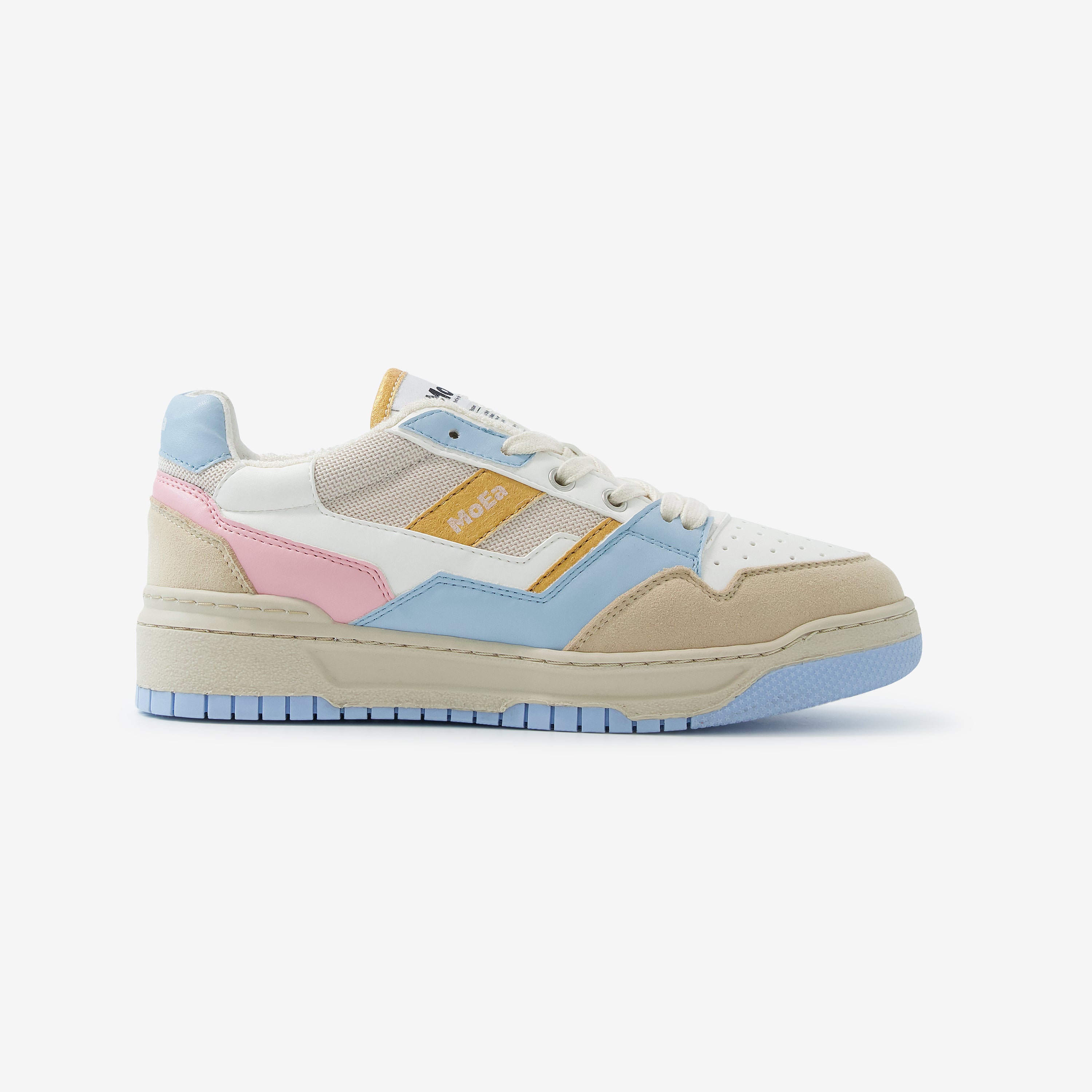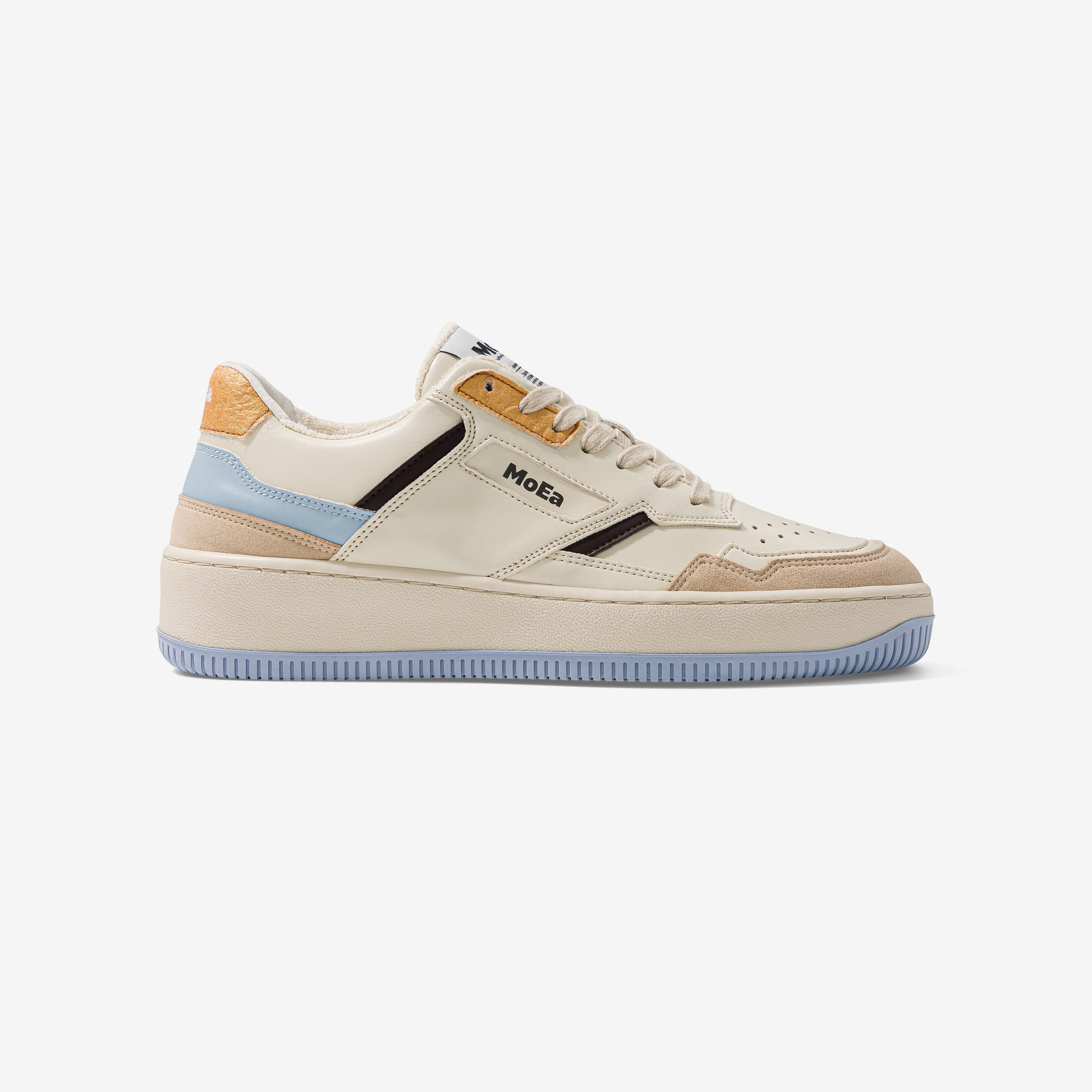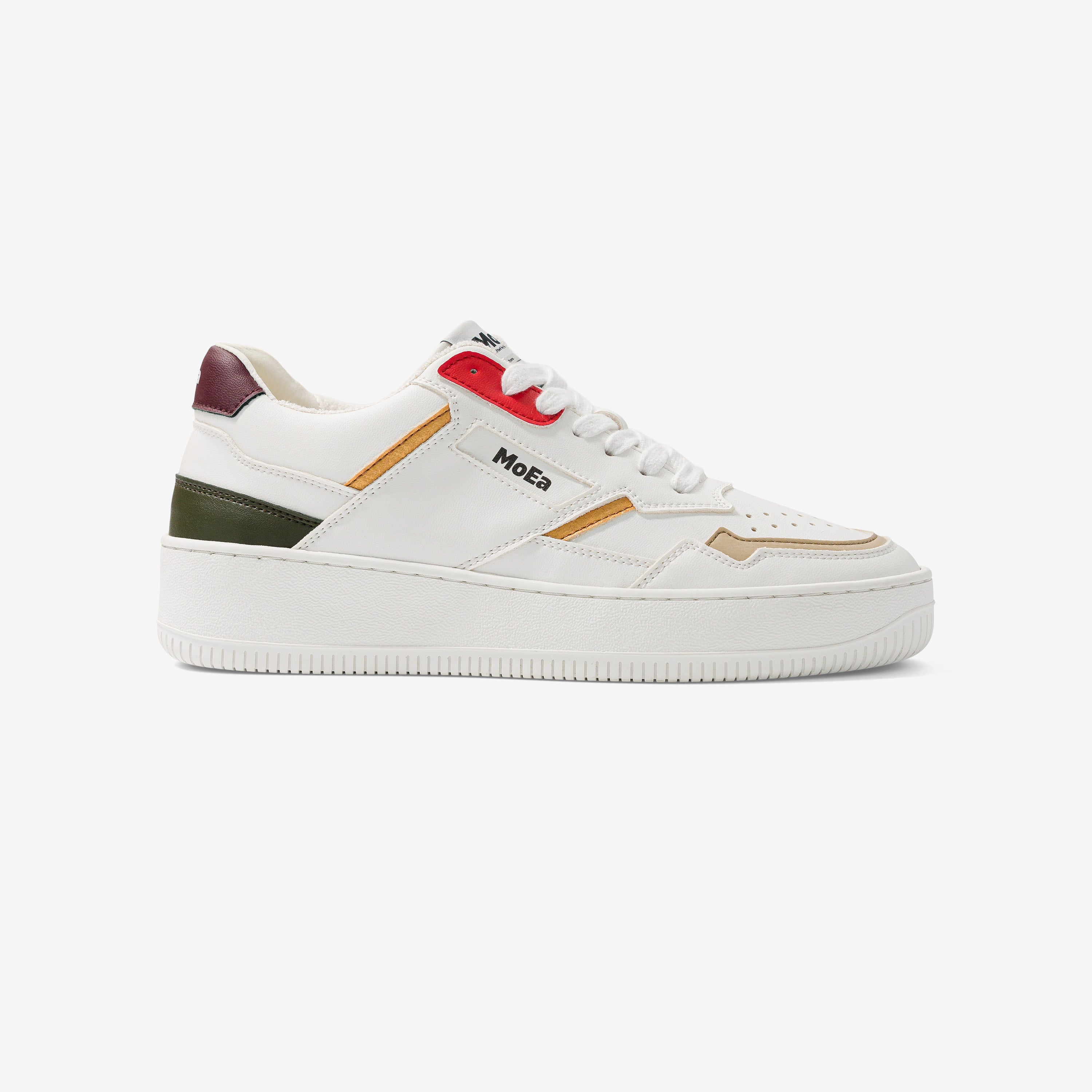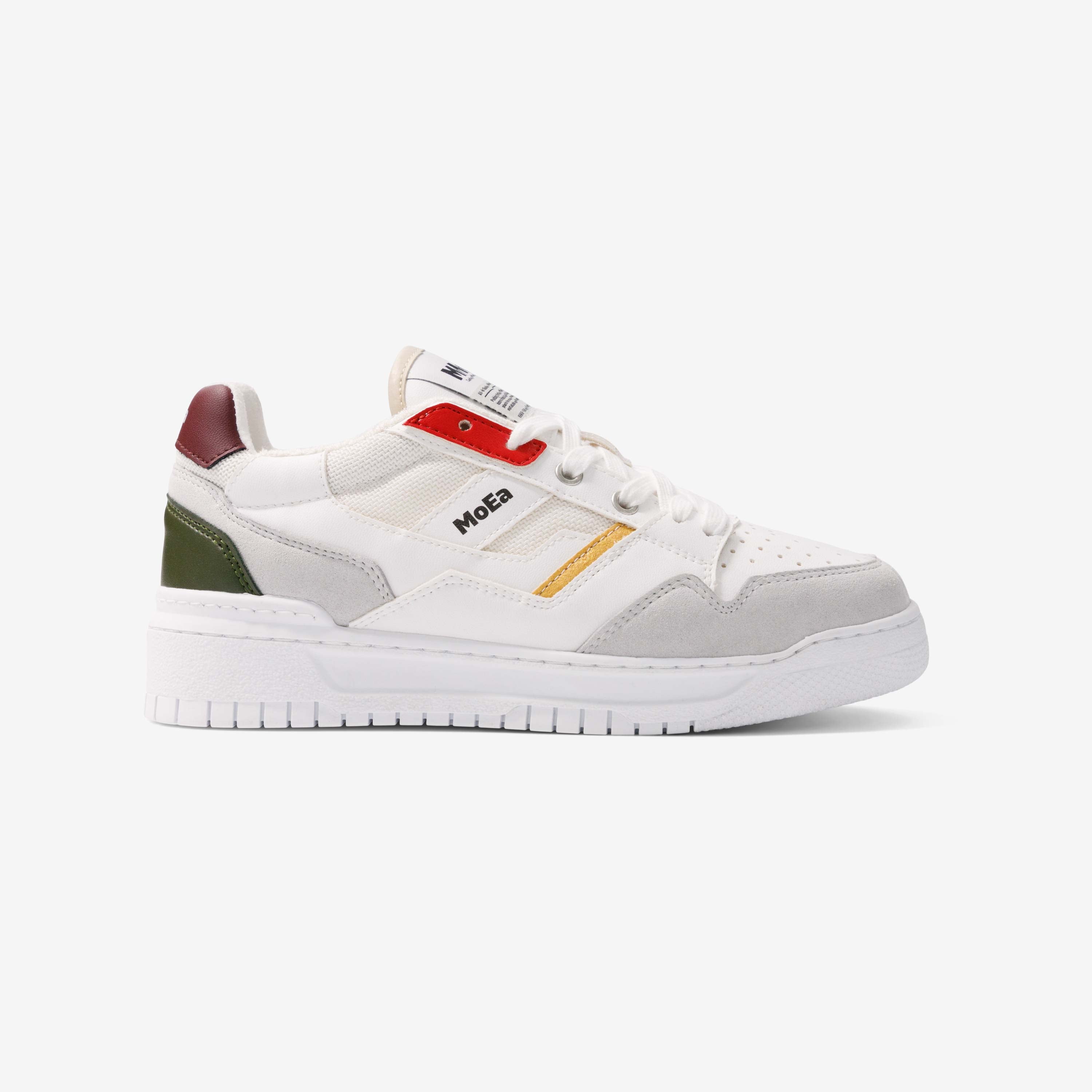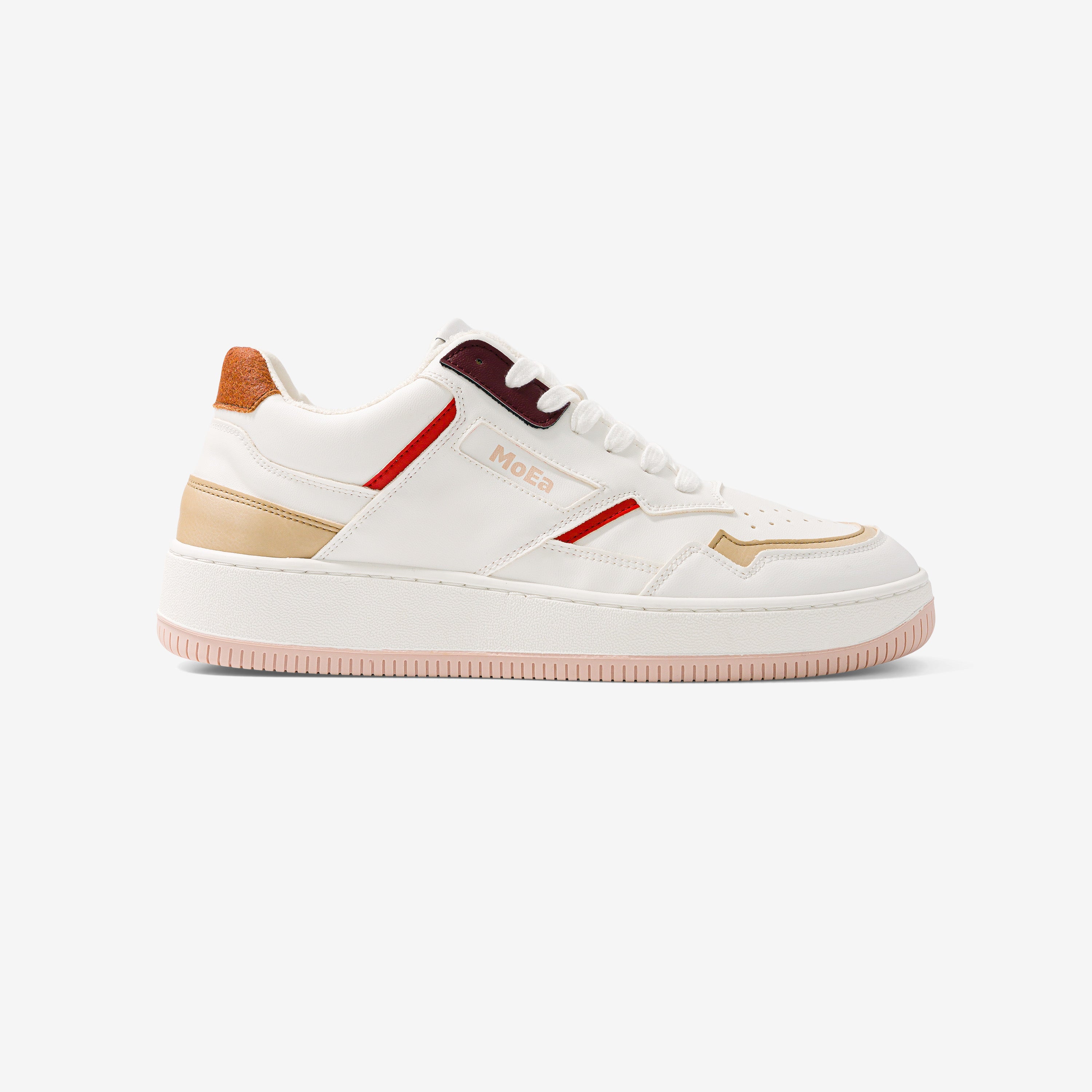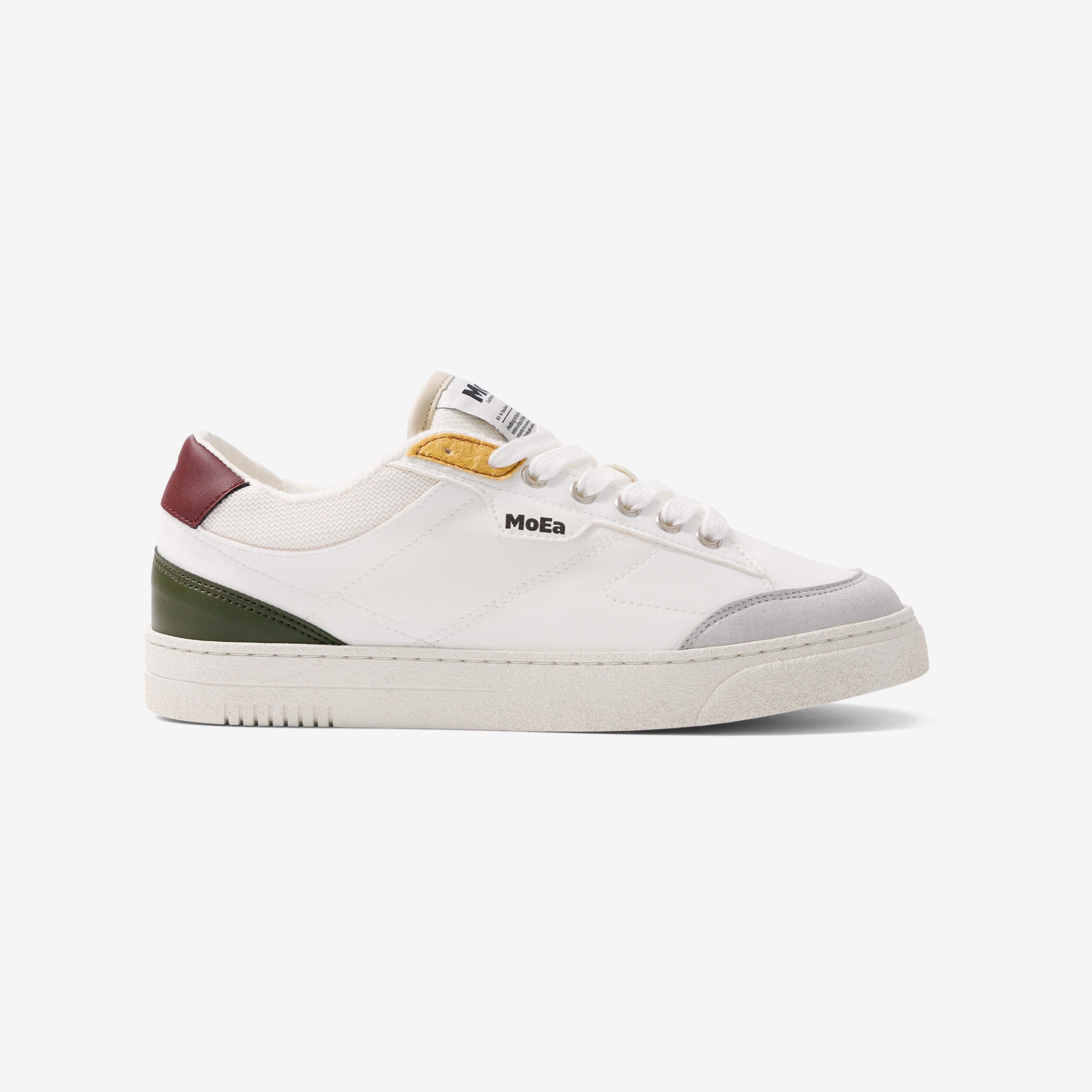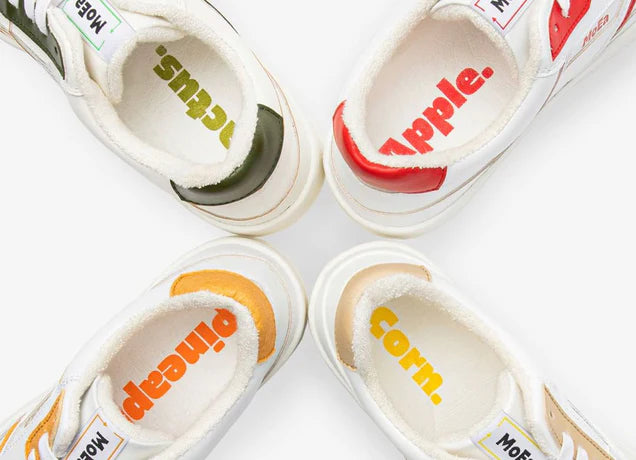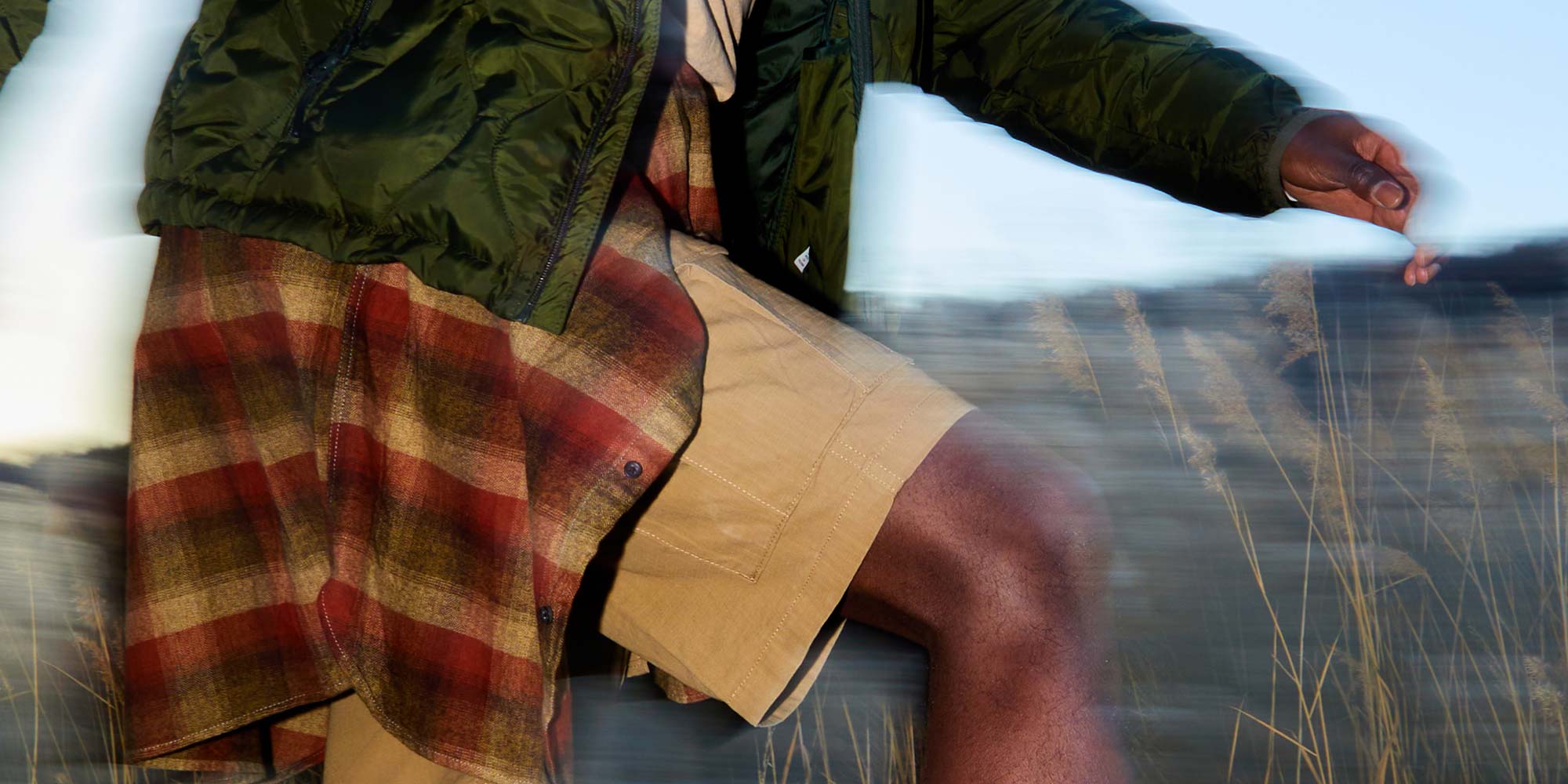Article: Bio-materials: the pathway to a more sustainable future
Bio-materials: the pathway to a more sustainable future

Bio-materials, where vegan and stylish meet
Making vegan sneakers that are stylish and that do not harm animals or the planet is possible. To move forward with this innovating project, you need a replacement for animal leather: at MoEa we use bio-materials.
Whether you have heard of them before or not, the term bio-materials sounds technical. The aim of this article is to deconstruct the myth about how hard it is to create resistant materials from non-animal substances, to create a pathway towards a more sustainable future.
A bio-material is a material made of biological organisms like plants, bacteria, fungi and other life forms. It’s a shortening for biologically derived materials (PennState College of Agricultural Sciences). After mixing the natural material with binding agent we obtain a paste that is applied to a textile backing that makes up the fabric of our shoes.
We are proud to say that at MoEa, we only use vegan components to make our sneakers, such as plants and fruit with recycled and bio-based plastic. This allows us to create sneakers with leather-like fabrics while using the least plastic possible. By doing so, according to a FAIRLY MADE® study our bio-based sneakers emit 26% less CO2 than for full plastic sneakers and 79% less than animal leather sneakers.
79% less CO2 emissions
Keep reading to find out why bio-materials were invented, before learning about the development of this vegan material. Last but not least you will discover the different bio-materials we use at MoEa.
1. Why find a vegan alternative to animal leather?
CO2 emissions generated by the textile industry (clothing and shoes) amount to 4 billion tons* per year (*ADEME). To put it into perspective, that’s more than the impact of international flights and maritime traffic combined.
Regarding animal leather, it is boycotted by vegans for two main reasons:
- Animal suffering
- High environmental impact
Cow farming is the second most important factor for CO2 emissions as they emit methane gas. Additionally, cow skin leather products have colossal water footprints. Indeed, according to the report "Leather's Impact on the Planet", published by the non-profit Collective Fashion Justice in November 2022, on average a pair of leather loafers uses 7,612 litres of water - enough drinking water for one person for more than 10 years.
Additionally, according to PETA “in the last half century, 70 percent of the Amazon rainforest has been cleared to make way for pastures or for growing feed crops. This mass deforestation causes habitat loss for millions of species, eliminates the Earth’s tree canopy, and drives climate change”
In the last half century, 70 percent of the Amazon rainforest has been cleared to make way for pastures or for growing feed crops

Furthermore, the tanning industry uses toxic products, which are poisonous for biodiversity. According to PETA, “turning animal skin into leather requires massive amounts of energy and dangerous chemicals, including mineral salts, formaldehyde, coal-tar derivatives, and various oils, dyes, and finishes, some of them cyanide-based.”
From the “Leather’s Impact on the Planet” report, 170 of the chemicals used to tan leather are likely to harm soil and agricultural land; contribute to air pollution; pose risks to wildlife, including animals and plants; and generate hazardous waste in various forms, and overall immense amounts of waste. For example, the wastewater from leather tanning processes comprises significant quantities of contaminants, including salt, lime sludge, sulfides, and acids.
According to PETA again: “The process of tanning stabilizes the collagen or protein fibers in skins so that they actually stop biodegrading—otherwise, the leather would rot right in your closet” The tanning process is also dangerous for those who work or live near tanneries as they are exposed to these toxic chemicals which increase the risk of cancer.
Dangerous for those who work or live near tanneries
For all these reasons, at MoEa we trade the use of animal leather for bio-based materials to make our vegan sneakers.

In Short:
- Cow-based leather has a higher carbon impact than bio-based materials.
- Leather tanning harms the environment in a variety of ways.
- Leather is responsible for massive land use and deforestation.
2. The development of vegan materials
Conscious of the environmental and social impacts of leather, many companies in the world have worked for several years on developing more sustainable alternatives. In fact, vegan materials have already existed for a long time. At first, they were made of petrol. However, even if 1m² of PU emits “only” 10kg* of CO2 compared to 61kg* for leather, it is still too high (* according to a study conducted by FAIRLY MADE®).
The innovation of these companies comprises in creating vegan fabrics, that act as an alternative to leather, with a low percentage of plastic. They use bio-materials such as grape, corn or pineapple waste from the food industry.
Bio-materials are the fruit of a technological process that transforms plant and fruit waste into wearable materials with leather-like properties. The waste is recycled and coloured, and the biomass is blended with stabilizers to give birth to incredible qualities. Moreover, ADEME stressing the importance of labels when selecting suppliers to work with, and ours have several ones, such as USDA BioPreferred, PETA, V-Label or The Vegan Society.

We are proud to support the innovation and to collaborate with:
Thanks to them, our GEN1 sneakers have an average carbon footprint of 6.38kg of CO2 per pair, compared to 10kg of CO2 for similar sneakers made of 100% PU, according to a study conducted by FAIRLY MADE® in 2023. So, we can safely say that our GEN1s made from bio-materials emit on average 32% less CO2 than full PU based sneakers.
3. Vegan solutions that exist today
Now that you understand the concept and the story behind bio-materials, it is time to find out what type of bio-materials are used by MoEa. MoEa supports innovations in the fashion sector and working with committed actors to create the more sustainable solutions of tomorrow.
1.AppleSkin
The content of the AppleSkin, made by MABEL® is 42% bio-based and 100% Italian. Its composition is:
- 26% apple waste + 38% PU + 20% polyester + 16% cotton
Our LCA made by the certified solution FAIRLY MADE® indicates it emits 3.19kg of C02 per m² versus 61kg of C02 per m² for animal leather.
Check out our AppleSkin sneakers.
2.GrapeSkin
The GrapeSkin, made by VEGEA®, is using a high content of vegetal, renewable and recyclable raw materials: grape skin from winemaking, vegetal oils and natural fibres from agriculture. Its composition is:
- 55% grape + 45% water-based PU
Our LCA made by the certified solution FAIRLY MADE® indicates it emits 4.46kg of C02 per m².
Check out our GrapeSkin sneakers here
3.OrangeSkin
Made from the waste of Sicilian agriculture, specifically orange peels by OHOSKIN®. Its composition is:
- 32% OrangeSkin and CactusSkin + 68% Recycled PVC
1m² of this bio-material emits 2.57kg of CO2 compared to 61kg for leather.
Check out our OrangeSkin sneakers.
4.CornSkin
Made from non-edible corn grown for textile use, the fabric is made by VIRIDIS®. Its composition is:
- 43% corn polyols + 26% viscose + 31% PU
The production of CornSkin leads to 1.70kg of CO2 emissions, compared to 10kg for 1m² of PU fabric.
Check out our CornSkin sneakers.
5.CactusSkin
Cacti use very little water to grow and be maintained. Its composition is:
- 35% cactus + 65% bio-PU
Our LCA study made by the certified solution FAIRLY MADE® indicates our CactusSkin emits 3.61kg of C02 per m² versus 61kg of C02 per m² for animal leather.
Check out our CactusSkin sneakers.
6.PineappleSkin
Made from waste pineapple leaf fibres. Its composition is:
- 72% pineapple fibers + 18% polylactic acid + 5% bio-PU + 5% PU
Our LCA made by the certified solution FAIRLY MADE® indicates our PineappleSkin emits 1.67kg of C02 per m² versus 61kg of C02 per m² for animal leather.
We use bits of pineapple in our All In sneakers.
7.MushroomSkin
Made from mushroom collected in local Vietnamese farms. This plastic-free material is made of:
- 64% viscose/lyocell + 19% natural rubber + 17% structural ingredients including mushroom
The Fishwick Environmental® certified solution indicates that our MushroomSkin emits 3.39 kg of C02 per m² compared with 61 kg of C02 per m² for animal leather.

All in all production that uses bio-materials results in a more eco-friendly and animal-friendly process as it causes lower carbon emissions and no animal suffering.
The production of animal-derived products, such as leather, which emit substantial amounts of methane and nitrous oxide, is a significant factor in driving climate change. In a fight to combat, at MoEa, by making plant-based and vegan sneakers instead of leather sneakers we turn to plants or recycle organic waste to...
Not waste anymore of the planet’s resources
Now it's time for you to discover our full bio-based sneaker collection.


